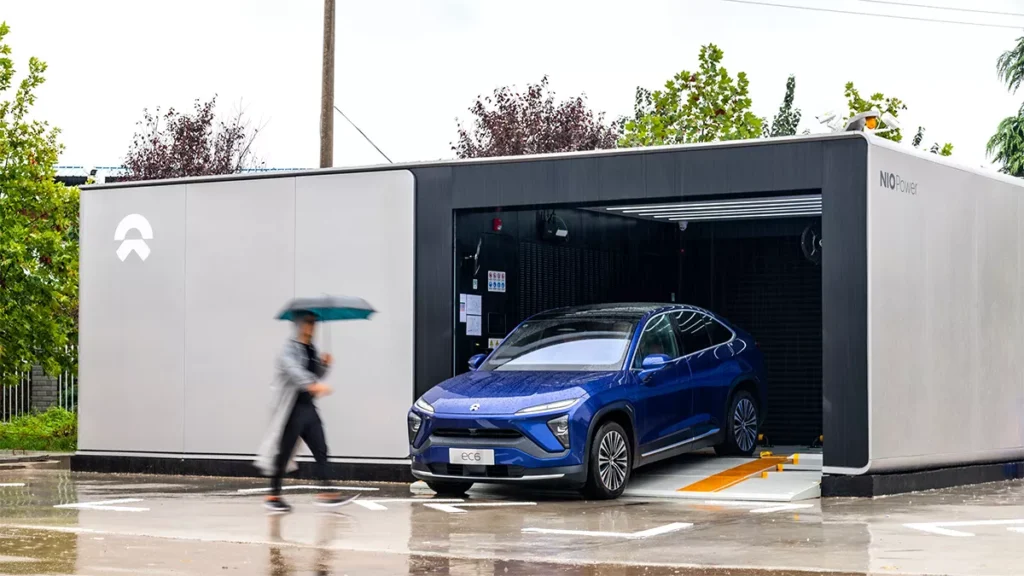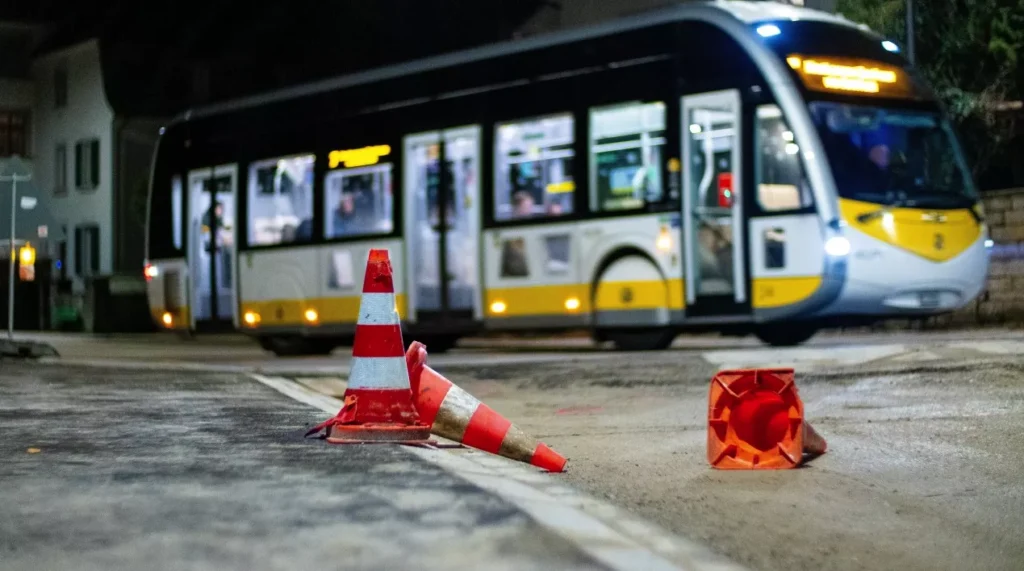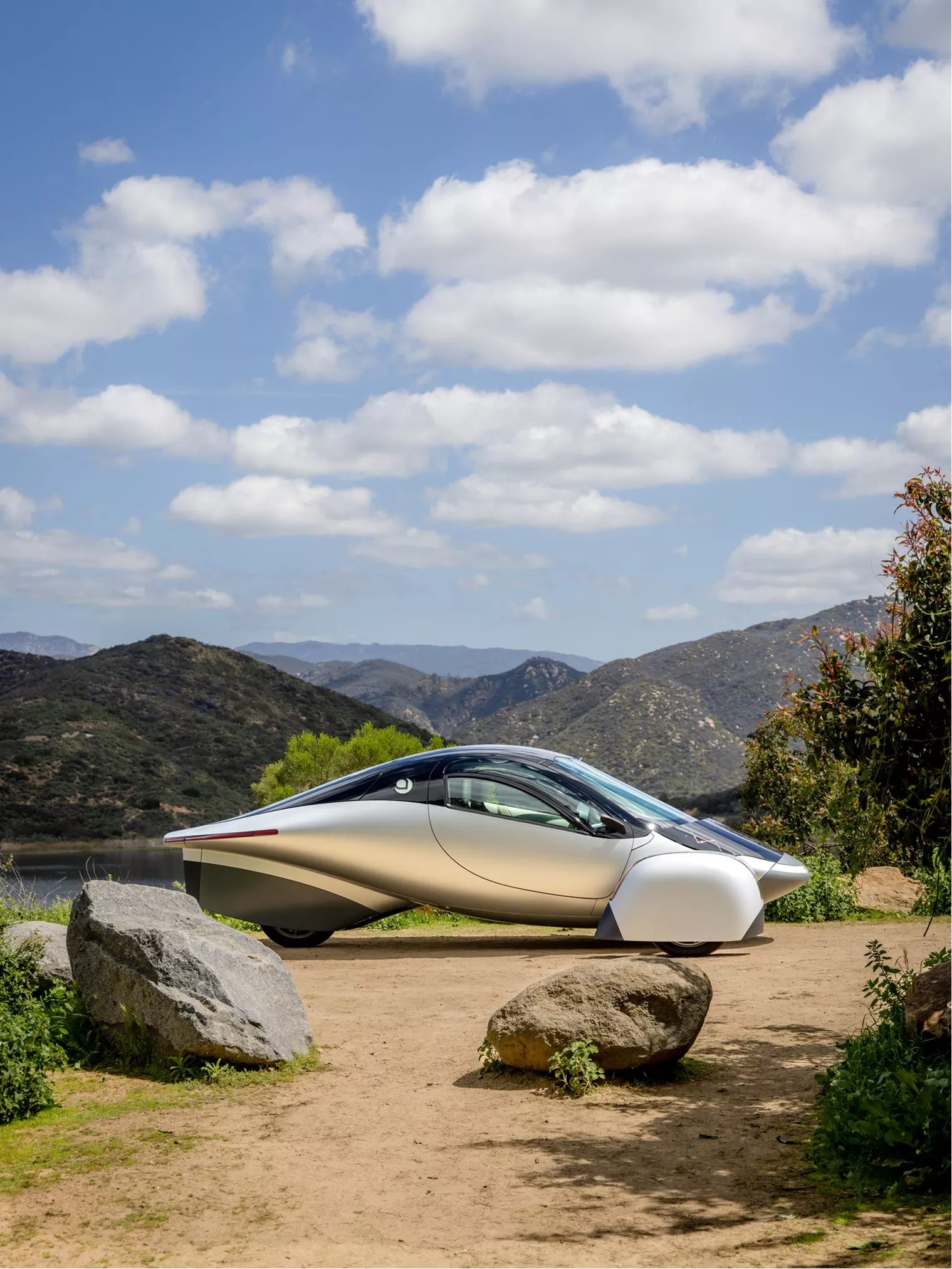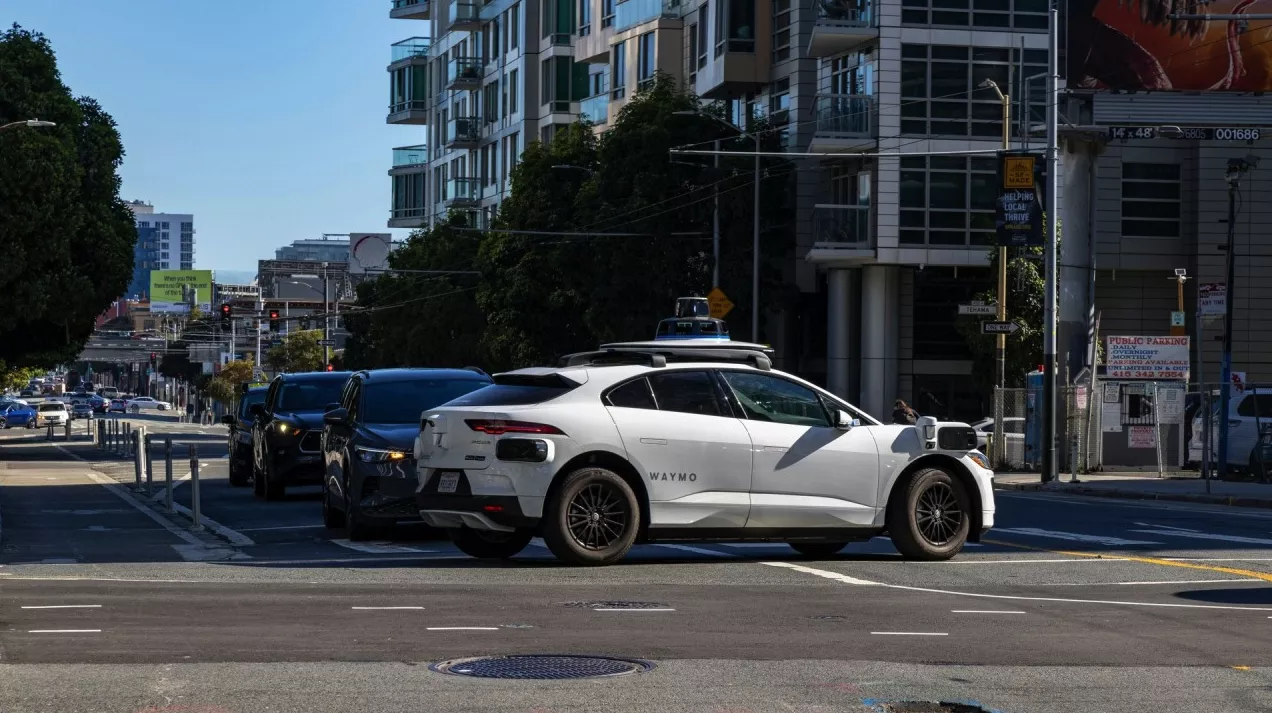










From EVs and batteries to autonomous vehicles and urban transport, we cover what actually matters. Delivered to your inbox weekly.

After a decade of moonshot engineering and billions in R&D, robotaxis, fully driverless vehicles hailed by app are no longer a future promise. They’re here, on the streets of Phoenix, San Francisco, Shenzhen, and more.
📊 Waymo now delivers over 200,000 autonomous rides a week in four U.S. cities. In China, Baidu’s Apollo Go has logged more than 9 million rides to date, including over a million in the last quarter alone. And Tesla, never short on ambition, says it will launch its first “unsupervised” robotaxi by June, no pedals, no steering wheel, and no shortage of skepticism.
So yes, the players are real. The numbers are growing. But the map? Still mostly blank.
🌆 Robotaxis are operating in just a handful of cities, often in carefully mapped zones with predictable conditions. Outside those bubbles, rollout has been slow, messy, and controversial. Safety questions linger. City governments are wary. And the tech, for all its promise, isn’t “plug and play.”
So what’s holding it all back?
Today, we’re breaking down the state of autonomous vehicles — who’s actually leading the race, how the tech works under the hood, why robotaxis are still missing from most cities, what the real safety data tells us, and where the next big breakthroughs are likely to emerge.
🏗️ The race to build, deploy, and scale driverless vehicles is no longer theoretical. A small but influential group of companies is putting real vehicles on real streets, and revealing just how fragmented the AV landscape has become.
Let’s break down who’s actually leading the charge in 2025, and how their strategies diverge.
The most advanced U.S. player in terms of public deployment. Waymo One operates 24/7 autonomous ride-hailing services in San Francisco, Los Angeles, Phoenix, and Austin. It leans on a full-stack approach: high-definition maps, LIDAR-heavy sensor suites, and tight control over service zones.
✅ Strength: Proven safety, operational experience
⚠️ Limitation: Expensive hardware, slow expansion. Its vehicles rely on a high-tech stack of LIDAR, radar, cameras, and HD maps to navigate dense urban environments, with remarkable consistency, but still within carefully mapped zones.

Often called Waymo’s closest global peer, Baidu is the AV heavyweight of China. Apollo Go operates across major cities like Beijing, Wuhan, and Shenzhen, leveraging China’s centralized regulatory model for quicker pilot launches and smoother fleet integration.
✅ Strength: National support, city-by-city rollout
⚠️ Limitation: Limited visibility and transparency outside China. These services avoid dense pedestrian areas, unpredictable construction zones, and even adverse weather whenever possible.

The wildcard and the only AV player skipping LIDAR and HD maps entirely. Tesla’s FSD (Full Self-Driving) is trained on video-based neural nets and real-world driving data. Elon Musk now claims Tesla will debut a steering-wheel-free robotaxi by June 2025 (Electrek) — though no formal pilots or third-party validations exist.
✅ Strength: Data scale, aggressive rollout ambitions
⚠️ Limitation: Too many unanswered questions

Once a rising U.S. contender, Cruise hit a wall in late 2023 after a high-profile incident in San Francisco triggered a major regulatory crackdown. It paused operations, laid off staff, and is now in rebuild mode with a renewed focus on transparency and safety.
✅ Strength: GM backing, strong early mileage data
⚠️ Limitation: Public trust recovery, operational pause

Operates robotaxis in Las Vegas through a partnership with Uber, but at a slower pace than Waymo or Baidu. Motional uses a mix of LIDAR and radar, and focuses on Level 4 autonomy within geofenced urban environments.
✅ Strength: Auto OEM integration, rideshare partnerships
⚠️ Limitation: Still in limited pilot phase

Fast-moving Chinese startups deploying in tier-1 and tier-2 cities. While less visible globally, these players are pushing ahead with public pilots, industrial partnerships, and logistics integrations in China and the Middle East.
✅ Strength: Local agility, expanding pilot zones
⚠️ Limitation: Fragmented scale, minimal international presence

It’s easy to imagine autonomous vehicles as just smarter versions of human drivers. Sensors instead of eyes, algorithms instead of instincts. But under the hood, AVs rely on a very different operating model.
And that model comes with serious tradeoffs…
🧭 Most robotaxis don’t just “learn” a city. They map it in extreme detail. Companies like Waymo and Cruise build high-definition (HD) maps that capture every curb, signpost, lane marking, and traffic light position. These maps are foundational, and the car localizes itself within centimeters based on them.
📍 On top of that, every vehicle is packed with a sensor stack, typically a combination of LIDAR, radar, cameras, GPS, and inertial measurement units (IMUs). These feed into onboard decision-making systems that detect objects, predict movements, and make split-second choices all within a defined Operational Design Domain (ODD): a clearly scoped area where the vehicle is allowed to operate.

This is why even the most advanced AVs can’t just show up in a new city and start driving. Mapping takes time. Training takes longer. Testing takes years. And every change a new construction site, traffic pattern, or road closure, may require updates to the maps and revalidation of the system.
Tesla, notably, is trying to bypass this approach with a vision-based system that skips HD maps entirely, betting on neural networks and raw driving data to learn and adapt like a human. But that method is still controversial, with limited evidence that it can match the reliability of more structured systems.
The bottom line? Most robotaxis today aren’t fully autonomous in a general sense they’re highly capable within very specific environments. That’s why expansion has been slow, and why AVs still struggle to scale outside their comfort zones.
If robotaxis work so well in San Francisco and Shenzhen, why aren’t they everywhere by now?
The answer isn’t just about technology. It’s about infrastructure, regulation, economics — and public trust. Even the most advanced AVs are still tightly confined by these four barriers:
AVs thrive in well-structured environments — consistent signage, predictable traffic, clear lane markings. But most cities don’t operate like that. Streets are under construction. Buses pull out suddenly. Cyclists don’t always signal. An autonomous system trained on neat traffic patterns can quickly get overwhelmed when reality kicks in.
AV rules in the U.S. are a mix. Different laws apply in every city, state, and at the federal level. A company can launch in Phoenix but get blocked in San Francisco. Even within the same state, rules can vary wildly.
In the EU, regulation is more centralized through frameworks like the Connected and Automated Mobility (CAM) strategy, but real-world deployment still depends on how each member implements those standards.
Compare that to China, where AV deployment is often accelerated by top-down coordination between cities, provinces, and national ministries.
Running a robotaxi fleet is expensive. The vehicles cost a lot, the sensors are fragile, and the support systems like maintenance, updates, and remote monitoring, aren’t cheap to scale. Most AV companies still rely on venture capital or corporate backing. Without a clear way to make money, expanding is a financial gamble.
Robotaxis may be statistically safer than human drivers, but one incident can undo years of goodwill. The incident where a Cruise robotaxi dragged a pedestrian in San Francisco led to stricter rules and public backlash, even though the company had a good safety record overall.
Cities are wary of letting tech companies “beta test” on public roads. Riders are hesitant to trust vehicles with no human behind the wheel. And there’s still no universal standard for what safe AV behavior looks like.
Robotaxis are supposed to make streets safer. And by some metrics, they already do.
🛟 Waymo’s most recent safety data (as of 2024 and early 2025) confirms that its driverless vehicles have 84% fewer airbag deployment crashes and 73% fewer injury-causing crashes compared to human drivers, based on millions of miles driven in Phoenix and San Francisco. Cruise, before its 2023 suspension, claimed 54% fewer collisions across over 1 million driverless miles.

That’s compelling, but it’s only half the story…
Making AVs work in cities is a far bigger challenge than just getting them to drive. When AVs fail, they often fail in ways humans don’t freezing in intersections, misreading emergency scenes, or over-correcting for edge cases. These aren’t frequent, but they’re memorable and deeply unsettling for regulators and the public.
💥 Just ask San Francisco. After Cruise’s vehicle dragged a pedestrian following an initial collision and failed to stop quickly, public trust cratered. State regulators revoked Cruise’s permit, citing concerns about delayed disclosures and safety transparency. It wasn’t just the incident that sparked backlash, it was how the company handled it.
❓ Meanwhile, Tesla’s approach remains controversial. Its Full Self-Driving (FSD) system operates without LIDAR or HD maps and is tested widely by consumers, not in controlled pilots. Critics argue it lacks independent validation and that unsupervised “beta” deployments on public roads blur the line between innovation and experimentation.
And then there’s the data gap. There’s no standardized, transparent framework for reporting AV incidents, disengagements, or safety interventions across jurisdictions not in the U.S., not in Europe, and globally. This makes meaningful comparisons nearly impossible and leaves both regulators and the public in the dark.
From California to Shenzhen, the race to implement driverless vehicles is now a global contest. But not everyone is running on the same track.
While U.S. companies dominate the headlines, China is quietly pulling ahead in growing its robotaxi fleet. Other regions like Europe and the Middle East are developing their own AV strategies, based on local politics, infrastructure, and priorities.
Let’s zoom out…
Baidu’s Apollo Go, AutoX, WeRide, and Pony.ai are all operating in multiple Chinese cities, backed by strong industrial policy and city-level partnerships. The result? Faster pilot approvals, deeper infrastructure integration, and a path toward commercial robotaxi zones that look far more real than anything in the West.
What helps: Top-down regulation, city incentives, national pride in tech exports.
What’s missing: Clear facts, global checks, and one rulebook

The U.S. has the most technically advanced players: Waymo, Cruise, Tesla, and Motional, but rollout is slow and uneven. Cities like Phoenix and San Francisco are AV hubs, while others ban or delay testing. Federal regulators are staying out while local pushback grows.
What helps: World-leading R&D, talent, and capital.
What’s missing: National policy, public trust, and consistent rules of the road.

The EU is moving deliberately. Its AV regulation through strategies like Connected and Automated Mobility (CAM) is centralized, but deployment is slow and focused more on freight, logistics, and assisted driving than public robotaxis.
Cities like Hamburg, Paris, and Stockholm are piloting AV shuttles with companies like Navya and EasyMile (France), while Mobileye is preparing robotaxi launches in Munich in partnership with Sixt. Meanwhile, UK-based Wayve is testing a vision-based, mapless AV system in London and Berlin, though it remains early stage.
What helps: Strong safety culture, cross-border coordination.
What’s missing: Serious players, serious scale, and serious ambition in robotaxis.

Cities like Dubai and Abu Dhabi are turning AVs into status projects, inviting players like Cruise, WeRide, AutoX, and Motional to launch in controlled zones with strong government support.
Elsewhere, Singapore, Seoul, and Beijing are pushing forward with autonomous shuttles, testing zones, and city-backed pilot programs. Even Doha and Riyadh are jumping in with early trials and smart infrastructure, starting with airport transport.
What helps: Government-led infrastructure, compact cities, no-nonsense permitting.
Still missing: Real-world proof and mass adoption.

Robotaxis are finally out in the wild. The maps are built. The test rides are real. The headlines are glowing.
But let’s be honest, most of these deployments still feel like tech demos, not transportation systems.
🥇 Waymo might be leading in the U.S., Baidu is scaling across China, and a few European firms are inching forward. But no one has figured out how to make autonomous vehicles work across an entire city, for lots of people, with public trust.
The tech is here. What’s missing is everything around it:
So what’s it really going to take to get robotaxis out of the sandbox, and into everyday life?
👇 Drop your takes in the comments. Which company, city, or country do you think is getting it right?